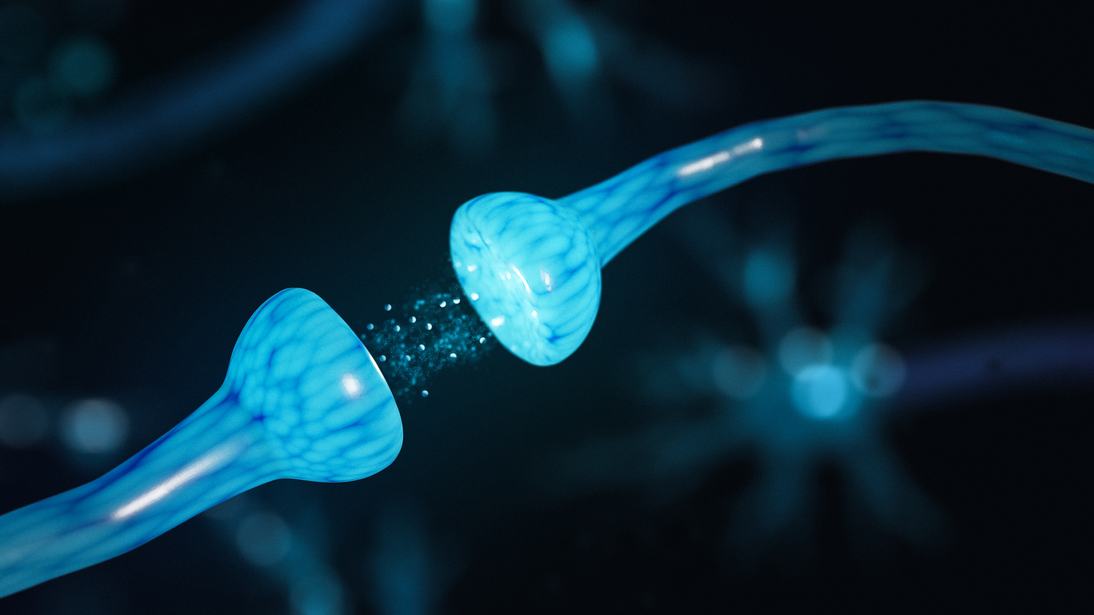Chronic Disease and Endocannabinoid Deficiency
Several studies have indicated that the ECS is intimately involved in the processing of pain signals.

What is the relationship between chronic disease and endocannabinoid deficiency?
Our understanding of the relationship between chronic diseases and the endocannabinoid system or endogenous cannabinoid system (ECS) is evolving and one that is fascinating researchers. In fact, since the scientific identification of the ECS in the 1990s, there have been approximately 10 studies per month published examining its impact, range, and complexity (Blesching, 2015).
A quick review of the endocannabinoid system
As described in a previous interview, the endocannabinoid system, which is present in all mammals, is a mechanism that regulates biological activity in the human body in a way similar to a lock and key. The ECS consists of three main components including cannabinoid receptors (lock), (endo)cannabinoids (key), and metabolic enzymes that immediately break down unnecessary cannabinoids.
Researchers often describe the ECS as providing a bridge between the mind and body as it is responsible for initiating a range of psychological and physiological changes. Thus, understanding its functionality is critical for effective disease management, particularly chronic and debilitating diseases (Blesching, 2015).
The theory of clinical endocannabinoid deficiency (CED)
There is an emerging literature that documents the ECS deficiency syndrome as an etiology (causation or origination) in psychological disorders, irritable bowel syndrome, migraine and other conditions (McPartland, Guy, & Di Marzo, 2014; Russo, 2008).
The theory of ECS deficiency syndrome is that “all humans have an underlying endocannabinoid tone that is a reflection of … the relative abundance and state of cannabinoid receptors … and in certain conditions … the endocannabinoid tone becomes deficient and productive of pathophysiological syndromes” (Russo, 2016, p.154). The concept has been touted as a possible explanation for why cannabis can be therapeutically beneficial in some chronic diseases that are treatment resistant.
Evidence for clinical endocannabinoid deficiency (CED)
Several studies have indicated that the ECS is intimately involved in the processing of pain signals. For example, Russo (2016) contended that the best evidence supporting CED theory relates to migraine, fibromyalgia, and irritable bowel syndrome. Let's take a quick look at these in turn.
Endocannabinoids and chronic migraines
According to (Greco, Gasperi, Maccarrone, & Tassorelli, 2010, p.85), a migraine is a “neurovascular disorder characterized by recurrent episodic headaches and caused by abnormal processing of sensory information”. Migraines are highly prevalent in the US impacting an estimated 14% of Americans at an annual cost of $20 billion (Russo, 2016). While the precise mechanisms underlying migraines are yet to be fully understood, there is strong evidence suggesting that activation of the ECS is a promising therapeutic tool in the reduction of both inflammatory and physiological pain thought to be involved in migraine attacks (Greco et al., 2010).
Fibromyalgia and endocannabinoid deficiency
Fibromyalgia is a chronic musculoskeletal pain that may increase pain response to pressure, enhance pain sensitivity, and is often accompanied by fatigue and problems sleeping (Valença, Medeiros, Martins, Massaud, & Peres, 2009). It is prevalent in approximately 4% of US patients, and like migraines, disproportionately impacts the female population at a ratio of approximately 4-9:1. Cannabis or cannabinoids are often used by fibromyalgia patients and there is some evidence suggesting cannabis may be effective in treating related symptoms including pain and increased sleep quality (Russo, 2016).
Endogenous cannabinoids and irritable bowel syndrome
Irritable bowel syndrome relates to a cluster of disorders characterized by abdominal pain, and similar to migraine and fibromyalgia, its underlying mechanisms are yet to be fully understood. Nonetheless, evidence points to the endocannabinoid system being involved in the regulation of multiple gastrointestinal functional and activation of CB1 and CB2 receptors under certain conditions has been shown to decrease hypersensitivity in the gut and limit secretion (Storr, Yüce, Andrews, & Sharkey, 2008).
Other conditions thought to be influenced by CED
While the evidence is only starting to accrue, there are indications that clinical endocannabinoid deficiency is associated with a broad range of ailments from cancer and
aging to motion sickness (Blesching, 2015; Russo, 2016). It may sound like a cliché, but more evidence is needed to better understand the clinical efficacy of replenishing naturally occurring endocannabinoids to fight multiple chronic diseases.
References:
- Blesching, U. (2015). The Cannabis Health Index: Combining the science of medical marijuana with mindfulness techniques to heal 100 chronic symptoms and diseases. Berkley, CA: North Atlantic Books.
- Greco, R., Gasperi, V., Maccarrone, M., & Tassorelli, C. (2010). The endocannabinoid system and migraine. Experimental Neurology, 224(1), 85-91. doi:10.1016/j.expneurol.2010.03.029
- McPartland, J., Guy, G., & Di Marzo, V. (2014). Care and feeding of the endocannabinoid system: a systematic review of potential clinical interventions that upregulate the endocannabinoid system. PLoS One, 9(3), e89566-e89566. doi:10.1371/journal.pone.0089566
- Russo, E. (2008). Clinical endocannabinoid deficiency (CECD): can this concept explain therapeutic benefits of cannabis in migraine, fibromyalgia, irritable bowel syndrome and other treatment-resistant conditions? Neuro endocrinology letters, 29(2), 192-200.
- Russo, E. (2016). Clinical endocannabinoid deficiency reconsidered: current research supports the theory in migraine, fibromyalgia, irritable bowel, and other treatment-resistant syndromes. Cannabis and cannabinoid research, 1(1), 154-165.
- Storr, M., Yüce, B., Andrews, C., & Sharkey, K. (2008). The role of the endocannabinoid system in the pathophysiology and treatment of irritable bowel syndrome. Neurogastroenterology & Motility, 20(8), 857-868.
- Valença, M., Medeiros, F., Martins, H., Massaud, R., & Peres, M. (2009). Neuroendocrine dysfunction in fibromyalgia and migraine. Current Pain and Headache Reports, 13(5), 358-364. doi:10.1007/s11916-009-0058-1
